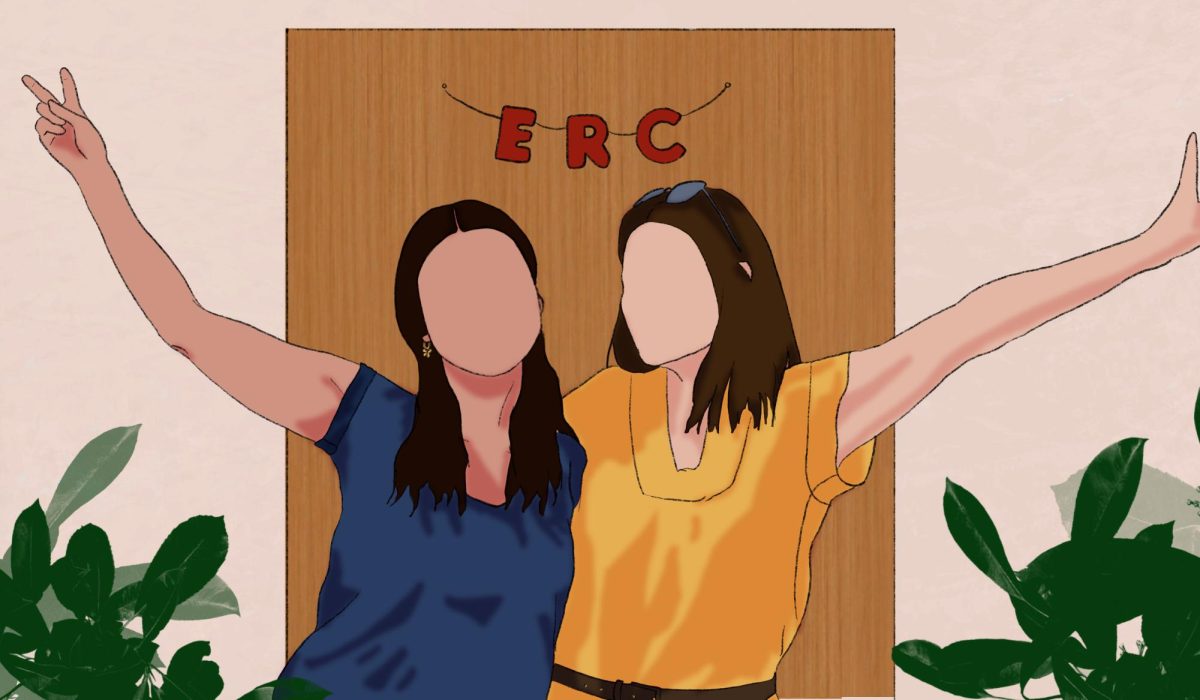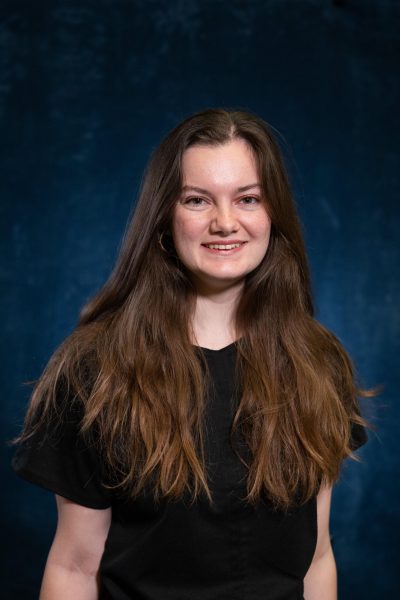The decision of whether to apply for a Resident Assistant position is a major dilemma for many undergrads. With the uncertainty of on-campus housing looming, the offer of a single-occupancy dorm room — along with a dining plan, new friendships, and the ability to get involved with the UC San Diego community – is enticing. But the new lifestyle that accompanies these benefits can be daunting: a new living environment, a major time commitment, and the responsibility of creating a safe and welcoming environment for other students. It’s common for prospective RAs to harbor concern about the possible isolation of only living among residents they’re in charge of or about being seen as the “bad guy.” Despite this, however, two RAs reveal their enthusiasm and love for the job, no matter what challenges may arise from it.
For every RA, the experience begins with a simple application.
It’s a testament to RAs’ passion for their position that future applicants often hear about the opportunity from their experienced RA friends. For Eleanor Roosevelt College senior Sanjana Narayanan, an RA at Earth Hall South, inspiration to apply came from the enthusiastic recommendations of her own RAs.
“It was my RAs from the year before who told me about it. I really looked up to them,” Narayanan recounted. “One of the RAs from my sophomore year was like, ‘Hey, the applications are out,’ and they let us know through their newsletters — that’s how I applied.”
Given that the job centers around nurturing a sense of community among residents, it’s no surprise that many RA applicants are especially attracted by the opportunity to become more involved and be leaders in their communities. Between essay questions, interviews, and an extensive summer training program, the process can prove to be daunting; however, it’s certainly clear that current RAs have found the experience well worth it.
With the responsibility of sending out newsletters, working shifts at the Residence Life office, writing reports on ongoing issues, and planning regular community events, an RA’s job isn’t easy. But despite the workload, it remains an increasingly popular option for students.
“It’s a competitive process,” Narayanan said. “Especially because housing and food gets covered by the position. Especially with the whole San Diego rental market and housing crisis, I think that is also a really big incentive for a lot of people to apply.”
When Narayanan first became an RA last year, the job immediately proved to be a naturally good fit. But like for many RAs, one struggle at first was learning to act as a type of authority figure for other students. In addition to learning to balance this job with her class work, she also had to navigate how this dynamic would play into her role as an RA.
“Initially, last year, it was a little bit difficult because I was trying to balance the role of understanding that I am also a student, but at the same time I’m an RA,” Narayanan explained. But being in her second year as an RA, she feels that she has found a balance between these roles.
“I’m able to empathize with them that they are students, but at the same time, I understand that a lot of the policies that are set forth are for the community … keeping that in mind has helped me navigate how I approach things as an RA,” she said.
Despite the struggles of this new dynamic with other students, Narayanan was able to make a difference on campus through her new position. Narayanan expressed that she’s especially passionate about creating a sense of togetherness on campus through community events and projects, with one notable example being the composting challenge she organized during her freshman year.
“I initially did a composting challenge with the TRELS scholarship, and I was able to interact with the gardener and with Ellie’s Garden Club … we just introduced a compost bin in ERC, so I wanted to raise awareness of composting and get students involved in that,” she said.
Narayanan made sure to keep this experience in mind as she navigated becoming an RA last year. She said that during her freshman year, it was especially difficult for students to get involved in their community due to COVID restrictions. But by setting up a challenge where other students could submit photos of themselves composting for the opportunity to win a gift card, she was able to connect students from across ERC while encouraging acts of care for the planet.
Meanwhile, Narayanan’s future co-RA, ERC junior Julia Serrano, was starting her journey. Serrano held a similar interest in getting to know other students and being an asset to her residential community.
“I really like to help people out. I really like to talk with other people,” she said. “I really wanted to be an RA for ERC because I really like the community that they have there. It just feels kind of like a home for me.” And help people she would. But before Serrano could start her work as an RA, a chaotic summer lay ahead.
After learning at the end of last school year that she would be working together with Narayanan, it was time for Serrano to start the required summer training process — a task made a bit more difficult by her involvement as a peer mentor in the Summer Bridge program.
“It was extensive, and it was long. But it was rewarding, too,” Serrano said. While ensuring that all RAs are highly informed and ready to take on any situation that may arise, this training seems to test their commitment to the position as well, with almost all-day training lasting from Monday to Friday for the five weeks leading up to move-in. This has proven challenging for students like Serrano who have summer commitments such as Summer Bridge, research, or internships, but she also made sure to point out that with good time management skills, achieving both is certainly possible.
“It was such a crazy period in my life,” Serrano said with a laugh. “The Summer Bridge program and RA training overlapped for about three weeks. In that time, I was juggling Zoom meetings at the same time, and I was having to go back and look at what I missed in RA training … it was a very hectic period, but nonetheless, I got through both of them successfully.”
So far, Serrano’s philosophy when it comes to being an RA is to prioritize organization and always being there for her residents, while also remembering that RAs are only human.
“Obviously, being organized is [important] because there’s a lot of planning that goes into it and a lot of organizing that goes into events,” she said. Serrano also emphasized the importance of “being open that you may make mistakes, but when you do make those mistakes, acknowledging that those mistakes were made, and being open that it’s okay to do that. Because RAs do make mistakes too — we’re all students.”
Similarly, for Narayanan, being an RA is about listening to the needs of residents and building connections with them in order to help them have the best experience possible.
“What makes a good leader is not necessarily being able to speak forth and be bold,” Narayanan said. “I think that’s often conflated with what a leader is. But to me, active listening has always helped me in the RA role because you are trying to gauge what the residents want — especially with programs — and if there’s any issues, you’re there as a listener.”
So far this quarter, Narayanan and Serrano have already helped to organize a few events for ERC students; these have included the Halloween social “Nightmare on iWalk” and an upcoming card-making social in their building giving thanks to the custodial staff. Serrano expressed that, as she and Narayanan primarily organized this card-making event, she feels especially proud of how it’s coming together.
“There’s a lot of kindness that goes into it on behalf of the residents. It’s them giving something back to the community that helps them — the custodial staff — because they do so much for us,” Serrano said.
Narayanan also pointed out that for her, a major part of planning community events is taking into account requests and feedback from residents.
“When it comes to programming, we try to ask our residents what they like,” she said. “It’s their budget; it’s their money. And I want their budget and money to be used for them … making sure that they know that we are doing this for them, and they are the ones driving the whole process.”
For both Narayanan and Serrano, though, the most rewarding part of being an RA is the relationships they build with residents and with other RAs. Despite living in different parts of the college, all 29 RAs in ERC have become close already and always look forward to seeing each other at their events and weekly meetings.
With 24 suites and 130 residents to keep track of, it’s hard to imagine that Narayanan and Serrano have been getting to know all their residents personally and offering them a helping hand when needed, but for them, this is an integral part of their role as RAs.
“If you see a resident walking past you, you say hi and you ask them how their day was. So if I have class near Geisel, I’ve seen some residents pass by and I’ll be like, ‘Hey, how are you doing,’ and it’s nice to have that small interaction — kind of like we’re a little family,” Narayanan said. “I love being there for my community and just being a familiar face.”
















